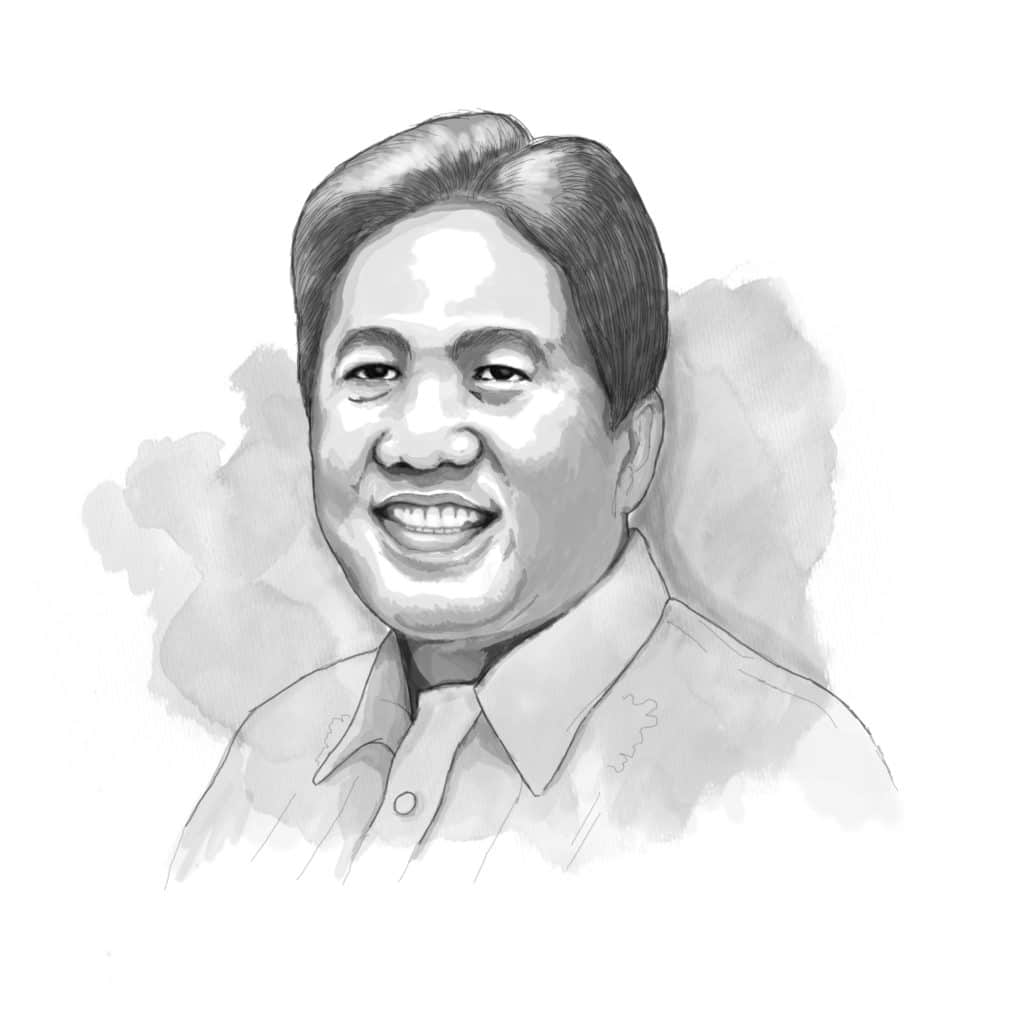ENDEAVOR

At a forum marking the second year of the implementation of the Strategic Plan for Judicial Innovations (SPJI) last Monday, Oct. 21, at the Manila Hotel, Chief Justice Alexander G. Gesmundo began his keynote speech by recalling his interview with the Judicial and Bar Council as one of the nominees for the post vacated by his predecessor, retired Chief Justice Diosdado Peralta. “I told them I will institute collective leadership,” he said, “and work in partnership with my colleagues.”
Preceding him at the podium were Senior Associate Justice Marvic M.V.F. Leonen, who gave a comprehensive summary report on SPJI milestones, and Associate Justice Alfredo Benjamin S. Caguioa, who delivered the opening remarks.
In the SPJI Year 2 souvenir program, three programs were featured: the Office of the Regional Court Manager (ORCM), the Unified Legal Aid Services (ULAS) Rules, and eCourt PH 2.0.
This month marks the start of Phase 2 of the ORCM project, which seeks to more efficiently deliver services to the trial courts by decentralizing functions performed by the Office of the Court Administrator (OCA) at the SC head offices in Padre Faura to each of the 13 judicial regions nationwide.
Since its inception in September 2023, an Office of the Regional Court Manager has been established in six judicial regions, namely Regions 1 and 3 in Northern and Central Luzon; Regions 7, and 8 in the Visayas; and Regions 10 and 11 in Mindanao. Some 150 ORCM personnel have been trained on the functions that have been devolved, namely: human resources, finance, procurement, and property management. Training of the staff for the next nine ORCMs began last April. Presently, phase 2 implementation is being mapped in preparation for the launching of an information drive in the phase 1 areas.
All told, the ORCM project has achieved a 40 percent completion rate.
The eCourt PH 2.0 system “is a unified, comprehensive, and intelligent case management system that aims to digitalize court adjudication and processes.”
It includes the following components: a) digital case dashboard in all trial courts; b) digitalization of case records and rollos in pending cases; c) digital filing and service before the SC and appellate courts; d) digital appeals process; and e) digital criminal and special proceedings.
Since Sept. 1, 2024, the High Court has started implementing the requirement that the filing of cases shall be accompanied by an electronic transmittal of the same documents in PDF format through email. Thus far, implementation of the eCourt PH 2.0 system is at 17 percent completion.
The SC En Banc approved the Rules on the Unified Legal Aid Services (ULAS) last Aug. 20, 2024, drawing upon inputs gathered during four regional consultations by stakeholders such as the Integrated Bar of the Philippines (IBP); lawyers’ organizations and advocacy groups; and law schools. These rules shall “govern the rendition of mandatory and incentivized pro bono legal aid service performed by covered lawyers for qualified beneficiaries.”
Presently, an ULAS Board headed by Justice Caguioa, is being constituted. It is overseeing the creation of the ULAS Office and completion of the ULAS Manual in preparation for the implementation of the ULAS Rules in early 2025.
An important and innovative reform measure that was proactively adopted by the High Court was the use of video conferencing beginning in 2020, in response to the coronavirus pandemic. This was reported by Associate Justice Jose Midas Marquez, who spearheaded this move when he was still serving as Court Administrator. From May to October 2020, more than 100,000 hearings were conducted; the initial success rate of 88 percent has since risen to 95 percent. Since then, the total number of online hearings has reached 1.5 million.
As an offshoot, many persons deprived of liberty (PDLs) who had been detained while undergoing trial and whose detention period had exceeded the maximum penalty for the offenses for which they have been charged, were released. This contributed to the decongestion of city and town jails and similar facilities at the height of the Covid-19 lockdowns and quarantine.
On closer analysis, the SPJI is focused on developing the High Court’s human resources so that effective management systems may be put in place. The ongoing judiciary-wide organizational reviews and restructuring involves five interrelated activities, namely: a) competency framework assessment and recommendations; b) system-wide process mapping; c) human resource management system and plan; d) reorganization plan with change management strategy; and e) public service continuity plan.
Emulating good corporate governance practice, the SC has also established a Management Committee (ManCom) and a Planning and Development Office. The Chief Justice, as Chief Executive of the judiciary, chairs the ManCom; the Senior Associate Justice acts as Vice-Chair for continuity. Attached to the ManCom is the Planning and Development Office, which is equivalent to the Corporate Planning (Corplan) function in business organizations.
Like the Philippine Development Plan for 2023-2028, the SPJI 2022-2027 enables the Supreme Court to chart a goals-focused strategy for ensuring the three desired outcomes of Efficiency, Innovation, and Access. These are, in turn, underpinned by the four guiding principles of Timely and Fair Justice, Transparent and Accountable Justice, Equal and Inclusive Justice, and Technologically Adaptive Management.
Truly, as Chief Justice Gesmundo has justifiably declared, “the justice that has eluded many, most especially the marginalized and underserved sectors, will soon be at arm’s reach.”